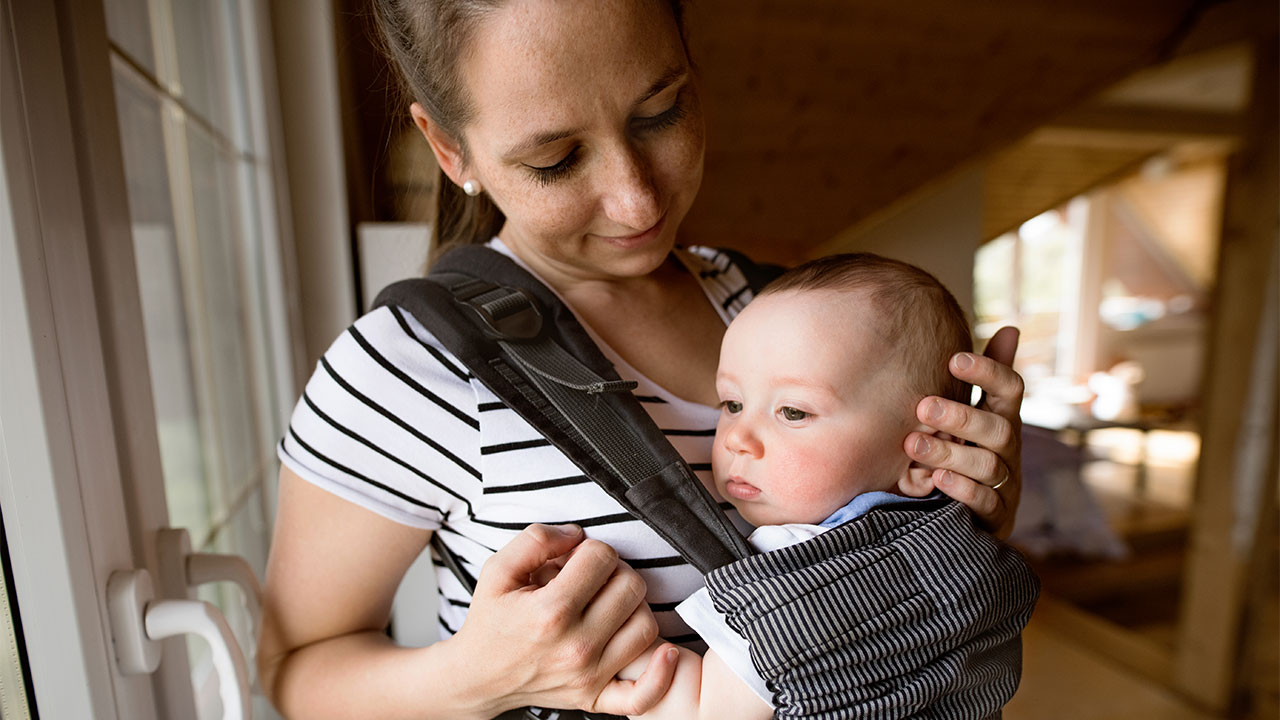Baby carriers are magical nests. They keep your little one close while freeing your hands for daily tasks. These lifesavers allow a parent to wonder at the world, as their baby does. Holding your baby snug in a carrier gives a cozy, comfy mix. It lets them feel safe and connected as they explore the world.
You’ll know when to face them forward in the carrier. From snuggles on your chest to steady head control, this milestone is usually around 4 to 6 months. Your baby’s eyes will be wide with wonder. They will absorb the world’s sights and sounds, whether facing out or nestled against your chest.
Your baby carrier becomes a trusted companion. It offers tips to keep your baby safe and secure. So, you can enjoy every moment of your journey together.
Check out the baby diaper return policy of walmart.
When is it safe to start using a baby carrier?
Using a baby carrier is a practical way to keep your newborn close while leaving your hands free. Many parents see these magical nests as lifesavers. They let them keep their little one close while doing other tasks. Yet, you must follow safety guidelines. They provide sturdy support for your baby. Experts and resources differ on the safe age for using a baby carrier. But many tell against using them for babies under four months old. Breathing freedom and safe support for your baby are top priorities.
Check the Weight Limit
Before you begin using a baby carrier, it’s crucial to verify the weight limit. Designers create different carriers to hold babies within a specific weight range. You must check your baby’s weight against the manufacturer’s guidelines. It’s necessary for their safety. Most carriers have a small weight rule. So, check that your baby meets it before using the carrier. Adhering to these guidelines will help you keep your baby safe as they grow.
Consult your pediatrician.
Born prematurely or with health issues, seek a pediatrician’s expert guidance immediately. This is especially important for respiratory conditions. Your doctor can tell you about using a baby carrier. They will consider your baby’s health needs. This step is vital. It ensures that the carrier is safe and suitable for your baby’s unique circumstances.
Follow Safety Guidelines (TICKS)
After your doctor approves, use the TICKS guidelines. They secure your baby in the carrier with protective alignment.
- Baby should be snug against your chest, preventing slipping or falling.
- Baby’s face should be visible at all times, with no material covering it, so you can track their breathing.
- You should be able to kiss your baby’s head easily, ensuring that they are at a safe and comfortable height.
- Leave enough space between your baby’s chin and chest to avoid blocking their airway.
- Support the baby’s back. Their tummy and chest should touch you. Keep their body upright to prevent a C shape that could restrict breathing.
These guidelines will help you make your baby carrier safe and comfortable.
When can babies face forward in a carrier?
Babies face outward in a carrier at about six months old. By now, their birth weight has usually doubled. Their hips and muscles have strengthened enough to support the forward-facing position. This lowers the chance of hip dysplasia, a condition of deformed joint growth. Your baby must have better head and neck control before facing forward. This ensures safe execution.
The American Academy of Pediatrics says your baby must support their head before you can face them forward. If you’re unsure, it’s always a good idea to consult your pediatrician for guidance.
Can a 3-month-old face forward in a carrier?
Your baby might show interest in their surroundings. They may do this by poking their head up while you hold them face-to-face. Yet, most babies are not ready for the front-facing carry at three months old. If your baby can support their head without it tilting, this is a sign they might be ready. It’s important to focus on their safety. So, ensure they have enough neck strength before trying the front-facing carry.
How long can a baby be in a front-facing carrier?
When your baby is in a front-facing carrier, watch for their comfort. They may be sensitive to stimulation. Babies can feel overwhelmed if they are facing forward for extended periods. Watch for signs of fussiness. They may show discomfort.
Start with 20-30 minute front-facing sessions. This lets your baby explore their surroundings without overstimulation. Notice your baby’s unique cues and tailor your approach to them. At 9-10 months, they may prefer longer, outward-facing sessions. At 4-6 months, they might still want an inward carry.
Safety Tips for Babies to Face Forward in a Carrier
For a safe, comfy fit for you and your baby, please read and follow the carrier’s instructions. Ensure that your baby’s hips and spine are well supported, and that their airways are clear. Adjust the carrier for different positions as needed. Follow the forward-facing guidelines for safety.
- Check the carrier’s leg holes to prevent your baby from slipping through. If necessary, use adjustable leg straps that can accommodate your baby’s growth.
- Carrier comfort is key to preventing back pain and discomfort. If you have any, consider switching to a better carrier.
- As your baby grows, ensure that you have a carrier designed to adjust with them. Most models have weight limits between 30 and 45 pounds. This keeps them safe and effective as your baby grows.
Final Thoughts
Babywearing is a great way to stay close to your baby while you do your daily tasks. Provide a secure base for your baby. This is important when they reach new milestones, like facing forward in the carrier. Consult your pediatrician. Follow safety guidelines to keep your baby safe and comfy as they explore.



